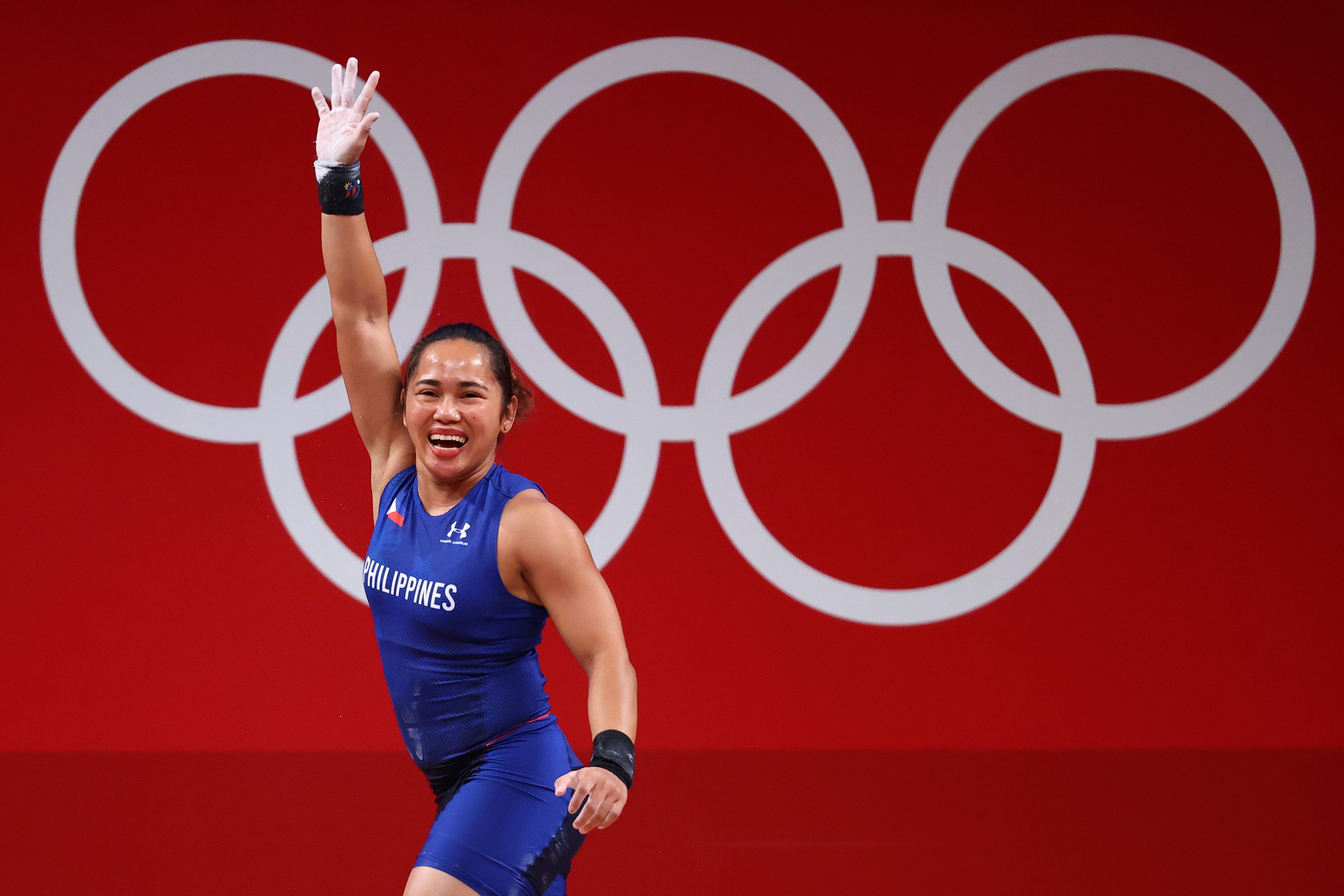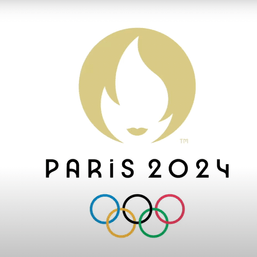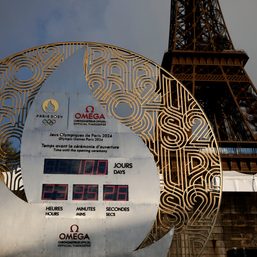SUMMARY
This is AI generated summarization, which may have errors. For context, always refer to the full article.

It was 1924 when the first Filipino athlete stepped into the Olympic arena and waved the Philippine flag in Paris.
A century later, a larger and stronger Filipino contingent has returned to the French capital to raise our flag on the world stage once again.
“This year marks a historic milestone – our centennial anniversary of competing in the Summer Olympics. We’re incredibly proud to be among Asia’s first and Southeast Asia’s trailblazing Olympians,” Philippine Olympic Committee president Abraham “Bambol” Tolentino said in a Facebook post.
“Let’s use this ‘Philippine Olympics 100 Years’ as a springboard for future success. We are ‘Proudly Pinoy’ with a strong Olympic Legacy. Let’s continue the journey together towards POC in Paris!” he added.
To commemorate the 100th anniversary of the Philippines’ participation in the Olympics, Rappler takes a look back on some of the most memorable highlights from our nation’s Olympic history.
First Filipino Olympian
The Philippines’ first and sole delegate to the 1924 Paris Olympics was David Nepomuceno, a sprinter from Albay. He competed in the 100-meter and 200-meter dash, but he failed to secure a medal.
Nepomuceno’s coach was Regino Ylanan, a Filipino athlete and sports administrator. He is also the founder of the National Collegiate Athletic Association.
During this period, the Philippines was still under American rule or classified as an insular territory.

Despite this, the International Olympic Committee (IOC) acknowledged the Philippines as an independent participant, a distinction not afforded to Hawaii, which competed as part of the American team during the same Olympiad, the National Historical Commission of the Philippines (NHCP) said.
According to the NHCP, the Philippine team was under the Philippine Amateur Athletic Federation (PAAF), which was attached to the American Olympic Association (now known as the US Olympic and Paralympic Committee). Manuel L. Quezon, then Senate president, served as the PAAF president.
This also explains why during the 1924 Olympics the Philippine flag was paraded under the US flag.
In 1929, the International Olympic Committee officially recognized the PAAF as the country’s national Olympic committee. The PAAF was renamed the Philippine Olympic Committee in 1975.
First Filipino Olympic medalist

Teofilo Yldefonso earned the Philippines’ first Olympic medal when he won bronze in swimming in the 1928 Amsterdam Olympics. He was also the first Southeast Asian to win in the Olympics.
In the 1932 Los Angeles Olympics, he secured another bronze. However, his performance in the 200-meter breaststroke in the 1936 Berlin Olympics saw him finish at seventh place.
Born in Piddig, Ilocos Norte, Yldefonso was hailed as the “Father of the Modern Breaststroke” for his distinctive swimming technique, the Philippine Veterans Office (PVO) said in an article.
During World War II in 1942, he was one of many Filipino and American soldiers who endured the Bataan Death March.
According to family accounts, the PVO reported that Yoshi Tsuruta, Yldefonso’s longtime swimming rival and friend, discovered that the Filipino swimmer was held as a prisoner in a camp in Capas, Tarlac. Tsuruta had crossed paths with Yldefonso in the 1928 and 1932 Olympics, where the Japanese swimmer won back-to-back gold medals.

According to PVO, Tsuruta worked to secure Yldefonso’s freedom, but unfortunately, it was too late.
Yldefonso died at the age of 39 at the concentration camp, in the arms of his younger brother Teodoro, who was a medical corps worker.
Like many others, Yldefonso, a war hero, was buried in a mass grave in Tarlac, and his remains were never recovered.
First silver
The first silver medal in the Philippines’ Olympic history was won by boxer Anthony N. Villanueva in the featherweight category of the 1964 Tokyo Olympics.
Boxing ran in Villanueva’s blood, as his father, José Luis, had won a bronze medal in the bantamweight division of the 1932 Olympics. Anthony joined the Philippine national team in 1962 after clinching his only Philippine amateur title.

In the 1964 Olympics, Villanueva triumphed over Giovanni Girgenti of Italy by split decision, Tamar Ben Hassan of Tunisia by majority decision, and knocked out Piotr Gutman of Poland, earning his place in the semifinals against American favorite Charlie Brown. Villanueva secured a 4-1 victory in the semifinals but lost the final to Soviet Stanislav Stepashkin by split decision.
His professional boxing career was short-lived, ending with a record of 1 win and 3 losses (KO 2). He also ventured into acting, with little success after three films. Later, he worked as a security guard at the Philippine consulate in New York, before returning to the Philippines in 1988.
Villanueva experienced hardships and made several attempts to sell his Olympic silver medal, but prospective buyers consistently turned him down.
At the age of 69, Villanueva died in his sleep on May 13, 2014 in Cabuyao, Laguna.
First gold
It was also in Tokyo where the Philippines snatched its historic first-ever gold medal.
Hidilyn Diaz dominated the women’s 55-kilogram class in the 2020 Tokyo Games – moved to 2021 due to the COVID pandemic – by lifting 97kg in the snatch and an Olympic record 127kg in the clean and jerk for a total of 224kg, also an Olympic record.
Prior to the Tokyo Games, Diaz won silver during the 2016 Rio de Janeiro Olympics. She also competed in the 2008 Beijing and 2012 London Olympics but failed to make a podium finish. (From wildcard to champion: Hidilyn Diaz in the last 4 Olympics)

Most number of delegates
Tokyo is also cherished by the Philippines, as it was in this city during the 1964 Olympics that the country fielded its largest contingent of athletes – 66 in total, the Philippine Center for Investigative Journalism (PCIJ) reported.
Largest medal haul
The year 2021 was a landmark year for Philippine sports, with the country bringing home a record-breaking four medals, the largest haul in its history.
Besides Diaz’s gold, silver medals were won by boxers Nesthy Petecio and Carlo Paalam, and Eumir Marcial claimed a bronze.

This year, at least 18 athletes are bound for the Paris Olympics, among them are EJ Obiena (athletics), Carlos Yulo (gymnastics), and Elreen Ando (weightlifting). Marcial, Paalam, and Petecio are also returning to the Olympics stage, which will open on July 26, 2024.
Currently, the Philippines has 14 Olympic medals on its chest, according to a PCIJ report.
As we celebrate a century of Olympic achievements, what new triumphs will our athletes bring home from Paris? – Rappler.com
SOURCES:
Add a comment
How does this make you feel?








There are no comments yet. Add your comment to start the conversation.